
Hazards and risk (GCSE)
KS4 National Curriculum Statement(s) covered
- Evaluating risks both in practical science and the wider societal context, including perception of risk. (WS)
- Carrying out experiments appropriately, having due regard to the correct manipulation of apparatus, the accuracy of measurements, and health and safety considerations. (WS)
Skip to:
In chemistry, understanding hazards and risk is crucial for conducting safe experiments and handling substances responsibly. A hazard is something that can cause harm, such as chemicals, equipment, or procedures. A risk is the likelihood that a hazard will actually cause harm.
When assessing risk, we consider:
- How the hazard can cause harm.
- The likelihood of exposure to the hazard.
- The severity of potential harm.
Laboratory Rules
To ensure safety in the lab, always follow these essential rules:
- No running: Always walk to avoid accidents and be aware of your surroundings and other students.
- No eating or drinking: Prevent contamination and accidental ingestion of chemicals.
- Never leave experiments unattended: Keep an eye on your work to prevent accidents.
- Tie back long hair: Avoid hair catching fire or getting caught in equipment.
- Wear appropriate eye protection: Regular glasses are not a substitute for safety goggles.
- Keep workspaces tidy: Clutter can cause accidents and make spills more difficult to manage.
- Wear appropriate clothing: Avoid loose clothing and open-toed shoes to prevent accidents.
- Handle chemicals and equipment properly: Follow instructions carefully and use tools correctly.
- Report all accidents immediately: Inform the teacher about any spills, breaks, or injuries.
- Be aware of your actions, as well as others': Simple tasks like pouring hot water are more hazardous in a lab with 30 other students.
The biggest hazard can be others doing their own experiments, not paying attention to you. Always be aware of your surroundings, don't just step backwards - someone could be walking behind you.
Hazard Symbols
Chemicals and substances used in the lab are often labelled with specific hazard symbols. These symbols provide a visual warning of the potential dangers associated with the substances. Below is a table of common hazard symbols and their meanings:
| hazard | symbol | risk | precaution |
|---|---|---|---|
| GHS01: Explosive |  |
Explosion due to shock, friction, fire; projection of fragments. | Store in secure, cool, and dry areas; handle with care. |
| GHS02: Flammable | 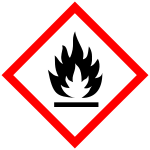 |
Easily ignitable; can cause fires or explosions. | Keep away from ignition sources; use non-sparking tools. |
| GHS03: Oxidising |  |
Intensifies fires by providing oxygen; may react violently. | Store away from flammable materials; use proper ventilation. |
| GHS04: Compressed Gas |  |
High-pressure containers; risk of explosion, asphyxiation, frostbite. | Store securely; avoid heating containers; ensure proper ventilation. |
| GHS05: Corrosive |  |
Causes severe skin burns and eye damage; corrodes metals. | Wear protective clothing; store in corrosion-resistant containers. |
| GHS06: Toxic | 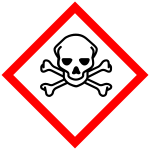 |
Can cause severe health effects or death; potential poisoning. | Use protective equipment; avoid inhalation, ingestion, and skin contact. |
| GHS07: Health Hazard/Hazardous to Ozone Layer | 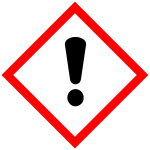 |
May cause irritation, allergic reactions; moderate toxicity; skin or eye irritation; respiratory tract irritation. | Wear protective gear; use in well-ventilated areas; avoid contact. |
| GHS08: Serious Health hazard | 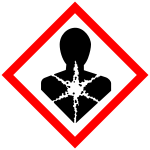 |
May cause chronic health issues like cancer, organ damage; respiratory sensitisation. | Use appropriate personal protective equipment (PPE); minimise exposure. |
| GHS09: Hazardous to the Environment | 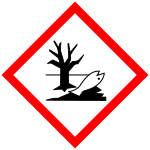 |
Toxic to aquatic life; potential for ecological damage. | Prevent release into the environment; follow disposal regulations. |
| Radioactive materials or ionising radiation sources. |  |
Exposure can cause radiation sickness, increased cancer risk, and genetic damage. | Use shielding and containment; limit exposure time; maintain distance; follow regulatory guidelines. |
Risk Assessments
CLEAPSS (Consortium of Local Education Authorities for the Provision of Science Services) is an advisory service that supports practical science and technology in schools. It provides guidance on health and safety, equipment, and practical activities, ensuring that science experiments are conducted safely and effectively.
One of CLEAPSS's key resources is its Hazcards, which offer detailed information on the hazards associated with various chemicals, including their potential risks and safety precautions. These Hazcards are essential tools for writing thorough risk assessments, as they help teachers and students identify hazards, evaluate risks, and implement appropriate safety measures.
A risk assessment is a detailed evaluation of potential hazards and the risks they pose. It also outlines the precautions needed to minimise these risks, and the appropriate response to any potential incidents.
While access to most CLEAPSS resources requires a subscription, which schools typically have, there are also student safety sheets available for free. These sheets provide accessible information on safe practices and are an excellent resource for students to understand the safety aspects of their experiments.
Steps in writing a risk assessment:
- List all potential hazards associated with the substance or procedure.
- Assess the likelihood and severity of harm for each hazard.
- Identify measures to reduce the risks.
- Be aware of how to deal with hazards if an incident occurs.
Worked Example - risk assessment for making copper sulfate
Copper sulfate can be made by reacting excess copper oxide powder with warmed sulfuric acid. The remaining copper oxide needs to be filtered out, and then the solution can be left to crystallise out after partially evaporating some of the solvent (water).
| hazard | possible harm | precaution | response in case of incident |
|---|---|---|---|
| sulfuric acid | skin and eye irritation, respiratory irritation | use dilute acid, wear eye protection, work in a well-ventilated area | rinse affected area with plenty of water, seek medical attention if necessary |
| copper oxide | skin and eye irritation, respiratory irritation if inhaled | wear eye protection, handle in a well-ventilated area, avoid creating dust | rinse affected area with water, move to fresh air if inhaled |
| heating sulfuric acid | burns from hot equipment, inhalation of sulfur trioxide fumes | wear eye protection, heat gently and in a well-ventilated area or fume hood, ensure stable equipment | cool burn under cold water, seek medical attention; move to fresh air if fumes are inhaled |
| filtration | spills and splashes, exposure to chemicals | wear eye protection, handle equipment carefully | clean spill immediately using appropriate spill kit, rinse affected skin with water |
| evaporating the solution | burns from hot equipment | wear eye protection, perform on a stable surface | cool burn under cold water, seek medical attention if necessary |
| glassware | risk of breaking, especially with use of stirring rod | handle carefully, store properly, use a rubber mat to prevent rolling, inspect for cracks before use | clean up broken glass using appropriate tools, avoid direct contact with hands, dispose of properly |
Evaluating Risks in the Wider Societal Context
Understanding how risks are perceived and managed extends beyond the science laboratory. In the broader societal context, evaluating risks involves a complex interplay of factors, including personal experiences, cultural attitudes, media influence, and scientific data.
Risk perception refers to the subjective judgment about the severity and probability of a risk. Emotions and psychological factors often influence this perception more than objective data. For example, people tend to fear dramatic and rare events, like plane crashes, more than common activities such as driving, which are statistically more dangerous.
The media plays a significant role in shaping public perception of risk. News reports often focus on sensational events, leading to a skewed perception of actual risks. For instance, nuclear accidents like Chernobyl create lasting fear of nuclear energy, despite it being one of the safest energy generation methods. Conversely, the widespread use of fossil fuels, which significantly contribute to pollution, often receives less critical attention.
Cultural attitudes towards risk vary significantly. Some cultures have a high tolerance for risk, while others prefer stringent safety measures. For instance, some Asian countries prioritise collective safety, resulting in lower tolerance for risky behaviours. In contrast, Western cultures might exhibit higher acceptance of personal risk, especially in activities like extreme sports.
Case Study - Vaccinations
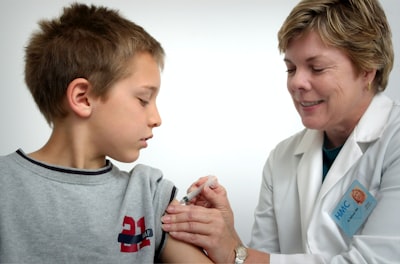
Vaccination programs face varying levels of acceptance influenced by cultural beliefs and misinformation. The perceived risk of vaccine side effects, despite being minimal, can lead to vaccine hesitancy. For example, misinformation about the MMR vaccine and autism led to decreased vaccination rates and measles outbreaks. Public health campaigns must address these perceptions with clear, evidence-based information.
Case Study - Climate Change

Climate change is a global risk where perception and scientific consensus often clash. Its long-term nature makes it hard to communicate effectively. People may see it as a distant problem, yet scientific data shows significant risks like extreme weather and sea-level rise. Effective communication is essential to convey the urgency of action.
Case Study - Nuclear Power
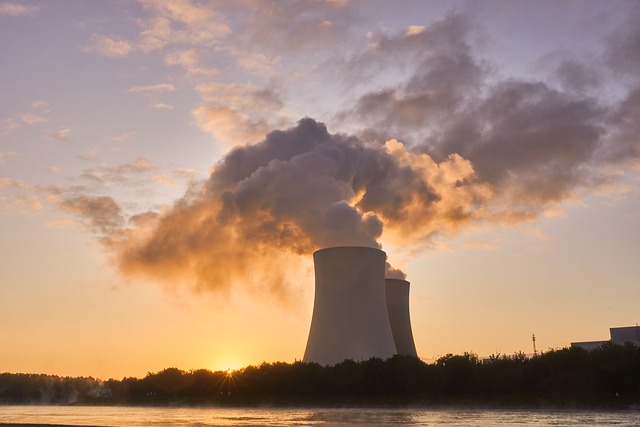
Nuclear power exemplifies the divergence between societal risk perception and scientific risk assessment. Despite low probabilities of accidents and rigorous safety measures, nuclear power is often viewed with suspicion. Incidents like Chernobyl have influenced public opinion. However, nuclear energy results in fewer deaths and less environmental impact compared to fossil fuels. Balancing fear with the need for clean energy is a societal challenge.
Balancing risks and benefits is crucial in societal contexts. While driving cars poses risks of accidents and pollution, it also provides substantial mobility and economic benefits. Similarly, medical procedures carry risks but often offer greater benefits in treating diseases. Policymakers must consider these trade-offs in regulations and guidelines.
Evaluating risks in the wider societal context involves understanding how perceptions are formed and influenced by various factors. Balancing scientific data with subjective perceptions helps society make informed decisions that promote safety and well-being. Recognizing the role of media, culture, and public involvement in shaping risk perception is essential for effective risk communication and management.
Listen to this page (feature coming soon)
Did you know?
- The first documented use of chemical hazard symbols dates back to the 1800s.
- The symbol for toxicity, featuring a skull and crossbones, is one of the oldest hazard symbols still in use.
- Some hazard symbols used today are part of the Globally Harmonised System (GHS), an international standard for chemical classification and labelling. This helps ensure safety information is consistent worldwide.
Why do we care?
- Understanding hazards and risks helps prevent accidents and injuries in the lab.
- Being aware of hazards and risks ensures legal compliance with health and safety regulations.
- Recognising and managing risks is crucial for making safe choices in everyday life, such as handling household chemicals safely.
- Proper risk assessments and safety precautions can improve safety in various professional fields, including healthcare, manufacturing, and food preparation.
Key information
- Hazards are potential sources of harm.
- Risks are the likelihood and severity of harm from hazards.
- Precautions are measures taken to reduce risks.
- Risk assessments evaluate hazards, risks, and necessary precautions to ensure safety.